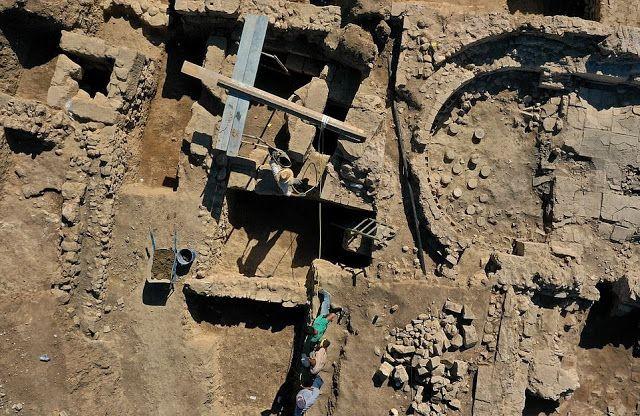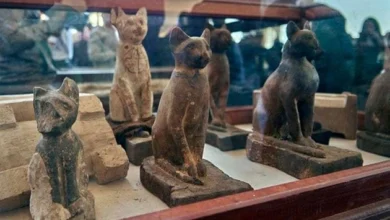Discovery in the ancient city of the Tenea reveals a myth

The Greek Ministry of Culture reported that Greek archaeologists had discovered the ancient city of Tenea, which has recently been considered a myth. This city, according to history, was inhabited by Trojan prisoners of war after the capture and sack of Troy by the Greeks in the 12th or 13th century BC.
Until now, the city of Tenea was known only from ancient Greek texts. During excavations carried out in the southern Greek region of the Peloponnese, walls and floors of clay, marble and stone were found.
Archaeologists also unearthed household items, dice and 200 coins dating from the 4th century BC. until the later times of the Roman Empire. Some of the coins were dated to the Roman emperor Septimius Severus, who ruled from 193 to 211.
According to the Ministry of Culture, past excavations have found only evidence of the city’s existence, but the last site has unearthed floors, walls and doorways. Also, among the curious finds, it is worth highlighting a gold coin, which was “used to pay for Charon, the carrier to the afterlife,” and an iron ring with a seal, which depicts the Greek god Serapis sitting on a throne, as well as Cerberus, a mythical three-headed dog guarding the gates of hell next to him.
The eeriest discovery was an earthen vessel with the remains of two human embryos walled up in the foundation of the building. Scientists are perplexed as to what this could mean, given that usually, in Greek culture, the dead were buried in cemeteries.

History has it that the city flourished until the fall of the Roman Empire when it was most likely destroyed during the Goth invasion. Scientists suggest that Tenea was finally abandoned in the 6th century AD during the Avar and Slavic raids.
According to leading archaeologist Elena Korka, the findings indicate that the inhabitants of Tenea were “remarkably wealthy”. This is not surprising since the city was located on a major trade route between Corinth and Argos in the north of the Peloponnese. Also, evidence that Tenea maintained contact with both the east and the west was unearthed pottery with clear oriental motives. Most likely, the city was relatively independent of the surrounding states and pursued its own policy.
Throughout history, very little was known about Tenea, except perhaps the ancient references to the alleged connection of the city with Troy and its citizens. They, together with the Greek colonists, founded the city of Syracuse in Sicily. In the coming years, excavations will continue to learn more about the legendary city founded by prisoners of war after the destruction of Troy.
The Trojan battle is believed to have taken place at the end of the Bronze Age, around 1200 BC. It happened around the same time as the Mycenaean civilization reached its heyday in Greece, which built stunning palaces and developed its writing system. The earliest accounts of this battle come from Homer, who lived around the eighth century BC, several centuries after the events. Moreover, even the writings of Homer were only recorded in the sixth century BC.
Hisarlik Hill in northwestern Turkey is considered the location of Troy. The site has been inhabited for almost 4,000 years, starting around 3000 BC. After Troy was destroyed, a new city was built on top of the hill. “There is no one and only Troy; there were at least 10 of them, which basically lie in layers on top of each other,” wrote a researcher at the University of Amsterdam in Gert Jan van Wijngaarden in his book “Troy: The City, Homer and Turkey”.




